
An aileron is a hinged flight control surface usually forming part of the trailing edge of each wing of a fixed-wing aircraft. Ailerons are used in pairs to control the aircraft in roll, which normally results in a change in flight path due to the tilting of the lift vector. Movement around this axis is called 'rolling' or 'banking'.

In fluid dynamics, a stall is a reduction in the lift coefficient generated by a foil as angle of attack exceeds its critical value. The critical angle of attack is typically about 15°, but it may vary significantly depending on the fluid, foil – including its shape, size, and finish – and Reynolds number.

In flight dynamics a spin is a special category of stall resulting in autorotation about the aircraft's longitudinal axis and a shallow, rotating, downward path approximately centred on a vertical axis. Spins can be entered intentionally or unintentionally, from any flight attitude if the aircraft has sufficient yaw while at the stall point. In a normal spin, the wing on the inside of the turn stalls while the outside wing remains flying. It is possible for both wings to stall, but the angle of attack of each wing, and consequently its lift and drag, are different.

Aircraft flight control surfaces are aerodynamic devices allowing a pilot to adjust and control the aircraft's flight attitude.

A slip is an aerodynamic state where an aircraft is moving somewhat sideways as well as forward relative to the oncoming airflow or relative wind. In other words, for a conventional aircraft, the nose will be pointing in the opposite direction to the bank of the wing(s). The aircraft is not in coordinated flight and therefore is flying inefficiently.
Aircraft flight mechanics are relevant to fixed wing and rotary wing (helicopters) aircraft. An aeroplane, is defined in ICAO Document 9110 as, "a power-driven heavier than air aircraft, deriving its lift chiefly from aerodynamic reactions on surface which remain fixed under given conditions of flight".

Trim tabs are small surfaces connected to the trailing edge of a larger control surface on a boat or aircraft, used to control the trim of the controls, i.e. to counteract hydro- or aerodynamic forces and stabilise the boat or aircraft in a particular desired attitude without the need for the operator to constantly apply a control force. This is done by adjusting the angle of the tab relative to the larger surface.

A servo tab is a small hinged device installed on an aircraft control surface to assist the movement of the control surfaces. Introduced by the German firm Flettner, servo tabs were formerly known as Flettner tabs. Servo tabs are not true servomechanisms, as they do not employ negative feedback to keep the control surfaces in a desired position; they only provide a mechanical advantage to the pilot.

The ASK 21 is a glass-reinforced plastic (GRP) two-seat glider aircraft with a T-tail. The ASK 21 is designed primarily for beginner instruction, but is also suitable for cross-country flying and aerobatic instruction.

In aeronautics, spoilerons are spoilers that can be used asymmetrically as flight control surfaces to provide roll control.
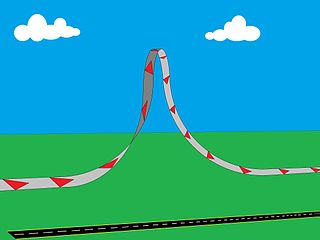
A barrel roll is an aerial maneuver in which an airplane makes a complete rotation on both its longitudinal and lateral axes, causing it to follow a helical path, approximately maintaining its original direction. It is sometimes described as a "combination of a loop and a roll". The g-force is kept positive on the object throughout the maneuver, commonly between 2 and 3g, and no less than 0.5g. The barrel roll is commonly confused with an aileron roll.

In a straight flight, the tail of the airplane aligns the fuselage into the relative wind. However, in the beginning of a turn, when the ailerons are being applied in order to bank the airplane, the ailerons also cause an adverse yaw of the airplane. For example, if the airplane is rolling clockwise, the airplane yaws to the left. It assumes a crab-like attitude relative to the wind. This is called a slip. The air is flowing crosswise over the fuselage. In order to correct this adverse slip, the pilot must apply rudder. If the pilot applies too much rudder, the airplane will then slip to the other side. This is called a skid.
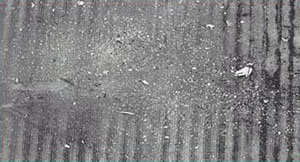
American Eagle Flight 4184, officially operating as Simmons Airlines Flight 4184, was a scheduled domestic passenger flight from Indianapolis, Indiana, to Chicago, Illinois, United States. On October 31, 1994, the ATR 72 performing this route flew into severe icing conditions, lost control and crashed into a field. All 68 people aboard were killed in the high-speed impact.
Aircraft upset is an unacceptable condition, in aircraft operations, in which the aircraft flight attitude or airspeed is outside the normally intended limits. This may result in the loss of control (LOC) of the aircraft, and sometimes the total loss of the aircraft itself. Loss of control may be due to excessive altitude for the airplane's weight, turbulent weather, pilot disorientation, or a system failure.
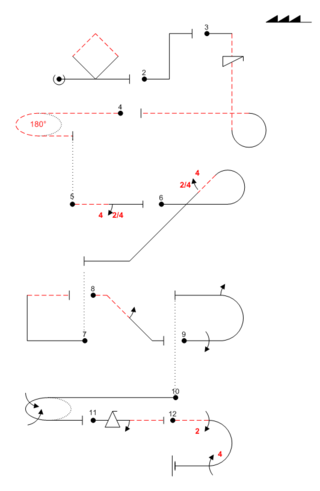
Radio-controlled aerobatics is the practice of flying radio-controlled aircraft in maneuvers involving aircraft attitudes that are not used in normal flight.
Supermaneuverability is the capability of fighter aircraft to execute tactical maneuvers that are not possible with purely aerodynamic techniques. Such maneuvers can involve controlled side-slipping or angles of attack beyond maximum lift.
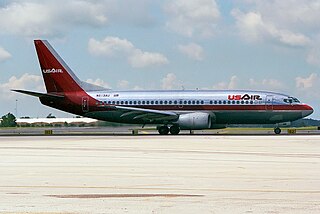
USAir Flight 427 was a scheduled flight from Chicago's O'Hare International Airport to Palm Beach International Airport, Florida, with a stopover at Pittsburgh International Airport. On Thursday, September 8, 1994, the Boeing 737 flying this route crashed in Hopewell Township, Pennsylvania while approaching Runway 28R at Pittsburgh, which was USAir's largest hub at the time.
3D Aerobatics or 3D flying is a form of flying using flying aircraft to perform specific aerial maneuvers. They are usually performed when the aircraft had been intentionally placed in a stalled position for purposes of entertainment or display. They are also often referred to as post-stall maneuvers, as they occur after aerodynamic stall has occurred and standard control surface deflections, as used in flight, are not effective.
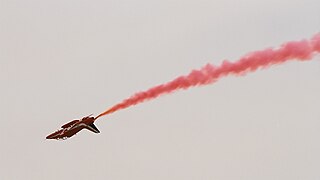
A slow roll is a roll made by an airplane, in which the plane makes a complete rotation around its roll axis while keeping the aircraft flying a straight and level flightpath. A slow roll is performed more slowly than an aileron roll; although it is not necessarily performed very slowly, it is performed slowly enough to allow the pilot to maintain balance, keeping a steady flightpath, pitch angle, and height (altitude) throughout the maneuver. The maneuver is performed by rolling the airplane at a controlled rate with the ailerons, and moving the elevators and rudder in opposition, or "cross-controlling," to keep the plane on a steady, level flightpath.

A falling leaf is a maneuver in which an aircraft performs a wings-level stall which begins to induce a spin. This spin is countered with the rudder, which begins a spin in the opposite direction that must be countered with rudder, and the process is repeated as many times as the pilot determines. During the maneuver, the plane resembles a leaf falling from the sky; first slipping to one side, stopping, and then slipping to the other direction; continuing a side-to-side motion as it drifts toward the ground.















